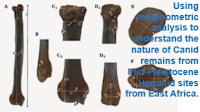Red Foxes, Vulpes vulpes, are small mesocarnivorous found across Eurasia and North America, and introduced to Australia. They are extremely flexible hunters, able to adapt their behaviour to a wide range of prey species. Fish remains have occasionally been found associated with Foxes, but they have never been observed fishing, despite living in close proximity to Humans in many parts of the world, which has led to speculation that they are scavenging Fish rather than actively hunting them.
In a paper published in the journal Ecology on 18 August 2022, Jorge Tobajas of the Departamento de Botánica, Ecología y Fisiología Vegetal at the Universidad de Córdoba, the Instituto de Investigación en Recursos Cinegéticos, and the Biodiversity Research Institute at the University of Oviedo, and Francisco Díaz-Ruiz of the Biogeography, Diversity, and Conservation Research Team at the Universidad de Málaga, describe witnessing a male Red Fox hunting Fish.
The observation was made while Tobajas and Díaz-Ruiz were carrying out fieldwork near the Valuengo reservoir in southern Extremadura, on 24 March 2016. Here, a male Red Fox was observed capturing European Carp, Cyprinus carpio, while they were mating close to the water's edge.
The Fox was observed catching Carp between 1.18 and 2.51 pm, at which point it noticed it was being observed and fled. During this time it made 12 hunting attempts, capturing 10 Fish with an estimated average mass of about 1 kg. This represents a capture success rate of 83%. The Fox was hunting while the Carp were in a reproductive frenzy, and paying little head to the danger present. Fish were captured by simply jumping into the water and grabbing them. After each successful hunt the Fish was carried to a site 20-30 m from the water's edge and buried, hidden, or simply left, presumably for later consumption. The Fox was never observed to eat any substantial part of the Fish, although small parts (possibly eggs?) were consumed on several occasions. At one point a female Fox was observed removing one of the Carp that the male had captured. The male Fox did not challenge this behaviour, suggesting that she was his mate, and that the male was capturing the Fish for the benefit of the female and a litter of pups (unobserved).
This observation adds significantly to our understanding of the ecology of the Red Fox, a familiar species generally thought to be well understood, and about which new discoveries would not be expected. It clearly demonstrates that Foxes are highly able hunters of Fish; such a high success rate is unlikely to represent an opportunistic action by a single animal, but is more likely to represent hunting by a Fox with an instinct for such behaviour, which has been further honed through experience.
At first site this observation appeared to represent an incident of 'overkill' by the Fox, i.e. a case of a Fox being presented with an overabundance of easy prey and killing more than it needs to consume out of some sort of misfiring instinct (an explanation often used to justify the hunting of Foxes). However, an animal killing prey which are then consumed by other members of its social unit (such as, in this case, its mate and presumed young) is far from maladaptive. Instead, this appears to be a good use of a seasonally available food resource which coincides with the Fox's own breeding cycle. Similar behaviour has been observed among Arctic Foxes, Vulpes lagopus, which cache large numbers of Bird's eggs in order to feed their young.
See also...







